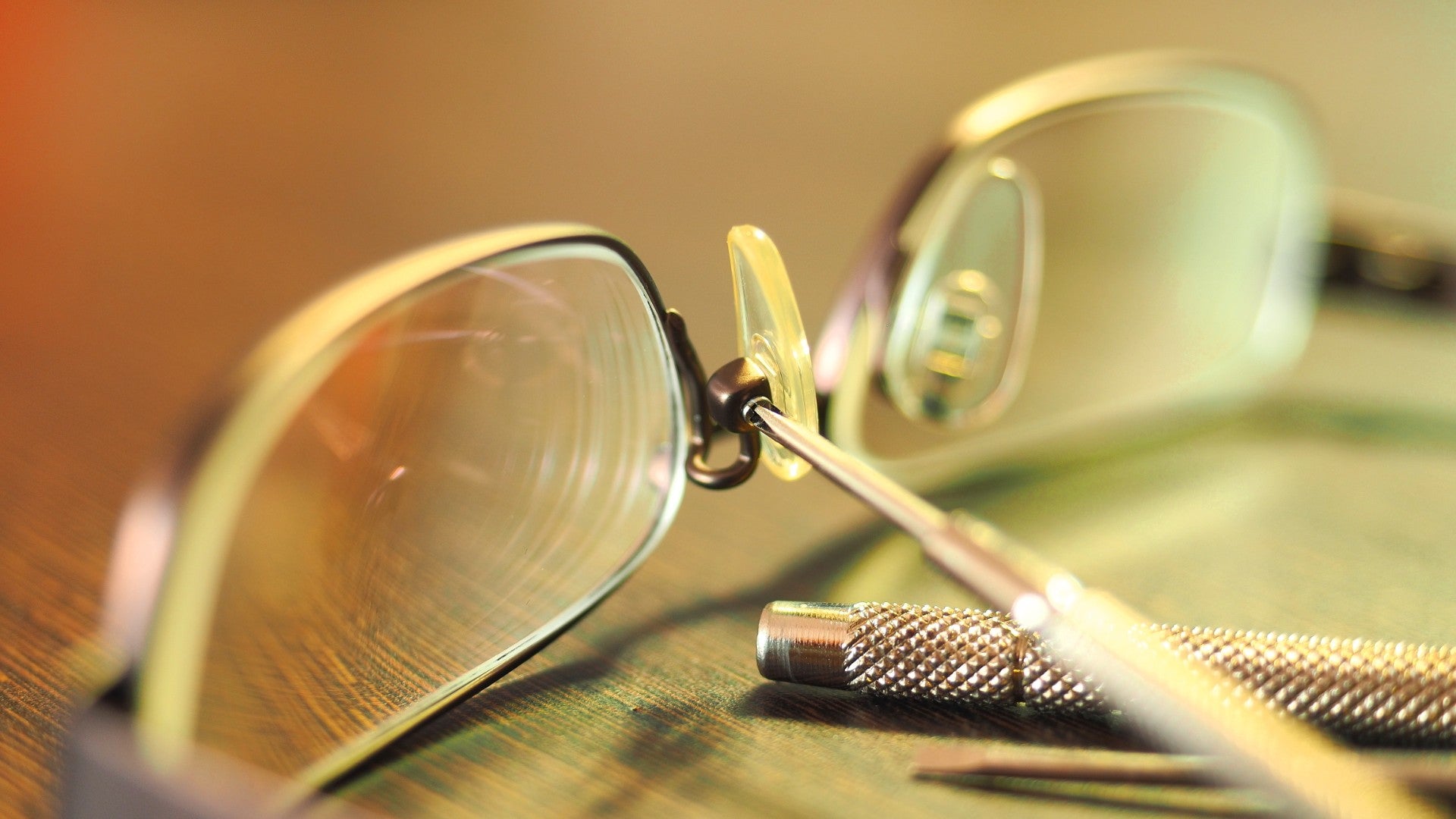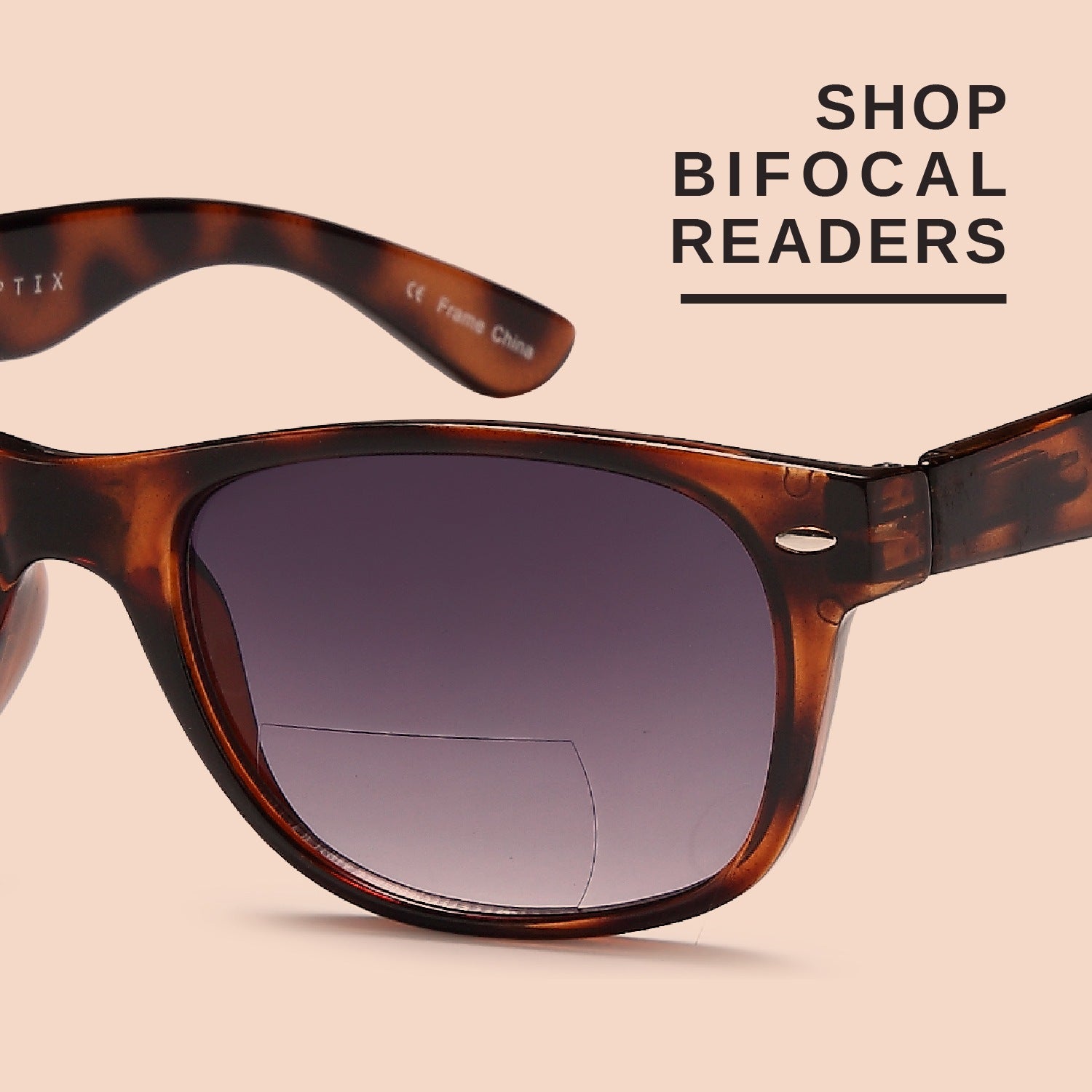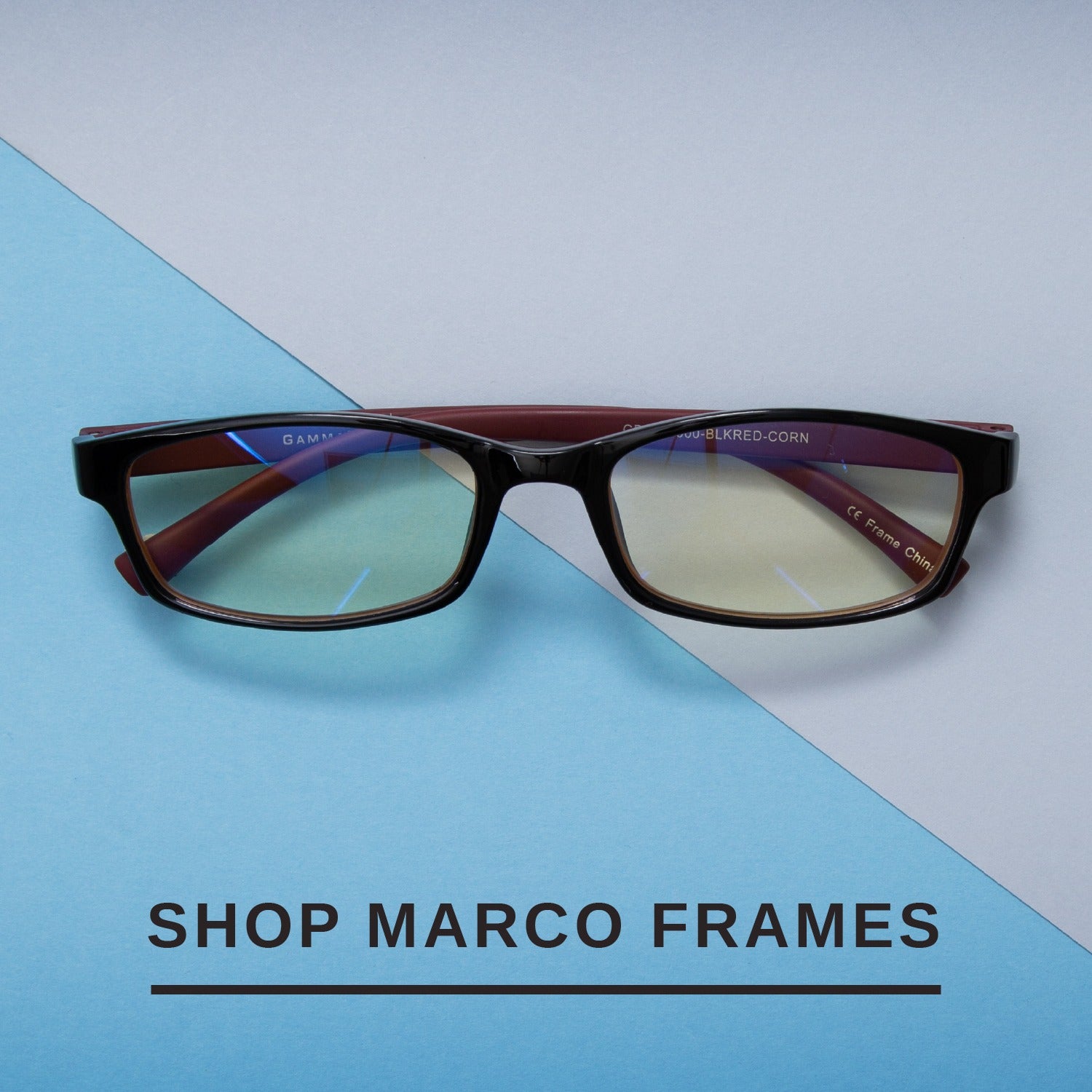
Eyeglasses are one of those amazing things that we don’t really give much thought to - we simply put them on our faces each day and enjoy being able to see clearly. But when you really stop to think about it, do you realize just how many individual pieces go into one singular set of frames? While some styles differ a bit, most glasses frame parts are generally the same and they all serve a specific function and even have specific names! Let’s dive right in and gain a better understanding of the parts of eyeglass frames.
Keeping Them On
Each and every piece of a pair of glasses is crucial because, without one section, the others wouldn’t be able to do their jobs. However, one of the more important parts to consider are the temples - the long pieces that run from the front of the frame over the top of your ears and end with a slight curve in the back. Temples can vary in length and thickness, but it’s important that you find a size that’s just right for you, otherwise, you could deal with a frame that falls down all day long. At one end of the temples are the temple tips, small covers typically made of plastic that rest behind your ears. Not only are these aesthetically pleasing and help to cushion the metal or plastic end of the temple, but they also make sure to keep your frames in place. When it comes to eyeglasses parts, these little elements do more work than you realize.
Located at the other end of the temples is a very important element of any frame - its hinges. These allow the temples to open and close, making your glasses far easier to store inside of a case. Hinges can be rather simple with just a screw keeping them together or they might house a spring mechanism that offers greater flexibility to the frame as a whole. It’s important to note that spring hinges are strongly recommended for children’s eyewear, as they have a tendency to grab their glasses by the temples and pull them off their faces. The spring allows for greater movement and keeps the hinges intact far longer than traditional styles.

First Things First
When you look at a pair of glasses, what’s the first thing you notice? In most cases, it’s the front of the frame, as this often gives you a huge clue about the style of the eyewear. Some simply call this the frame front but when dealing with metal styles specifically, it’s called the eye wire. This is one of the most prominent eyeglasses parts and not only helps to impart a sense of individuality but also gives the frames their structure. Some eye wires have a rimless style with a thin nylon string that runs along the bottom while others completely encircle the lenses.
Even though this seems like one cohesive piece, the frame front itself is actually made of more than one component. The portion that rests right over the nose is called the bridge, and can also take on varying forms depending on the frame’s construction. Some bridges might have metal pieces attached to the back called nose pad arms while plastic frames feature a bridge section that is molded to comfortably fit one’s nose. Within the plastic eyewear category itself are a range of bridge styles, including saddle bridges and keyhole bridges. Various shapes are designed to fit specific types of nose shapes, and while some are more universal, others are catered to harder to fit facial features.
It’s In The Details
So far we’ve covered the major glasses frame parts, but there are still a few small elements to consider before we have a complete pair. If your frame is made from metal and has nose pad arms, then you’ll certainly want to have a comfortable set of nose pads attached to them. Nose pads can be made from various materials including hard plastic and soft silicone, so make sure to take the time to determine which ones feel best on your bridge.
Last but certainly not least, the things that keep all the parts of eyeglass frames together are the screws! While this might not seem important enough to mention, anyone who has lost a screw before knows how much it can impact your day. Glasses screws come in varying sizes and in some cases are manufactured only for the specific frame they’re in. Like with many other items, the screws in your eyewear could loosen over time, and unless you want to make regular trips to your local eye doctor’s office to get them tightened, we’d recommend buying an inexpensive screwdriver designed specifically for this purpose.

Getting It Right
One final point to touch on when it comes to the parts of eyeglass frames has to do with actually making your initial purchase because while eyewear is certainly more complex than many realize, we can’t overemphasize the simplicity of a properly fitting frame. Screws might not make a difference and the temple covers could be any color you desire, but when it comes to the width of the frame front, the shape of the bridge, and the length of the temples, you’ll end up either exceptionally pleased or fighting with your glasses every day. When selecting your new eyewear, make sure to take all frame elements into account and think about how they will fit your unique facial features.
Time To Shop!
Any eyewear lover will tell you that one pair is never enough, so whether you’re about to purchase your very first pair of glasses or you’re shopping for your fourth set, take a look at the huge selection by Gamma Ray Optix. From funky shapes and bold colors to more traditional style frames, there’s a little something for everyone. Best of all, each frame selection offers detailed information including the size of all frame parts so you won’t be left wondering how they fit. It’s time to go shopping and discover the pair of glasses that will become your new favorites.






